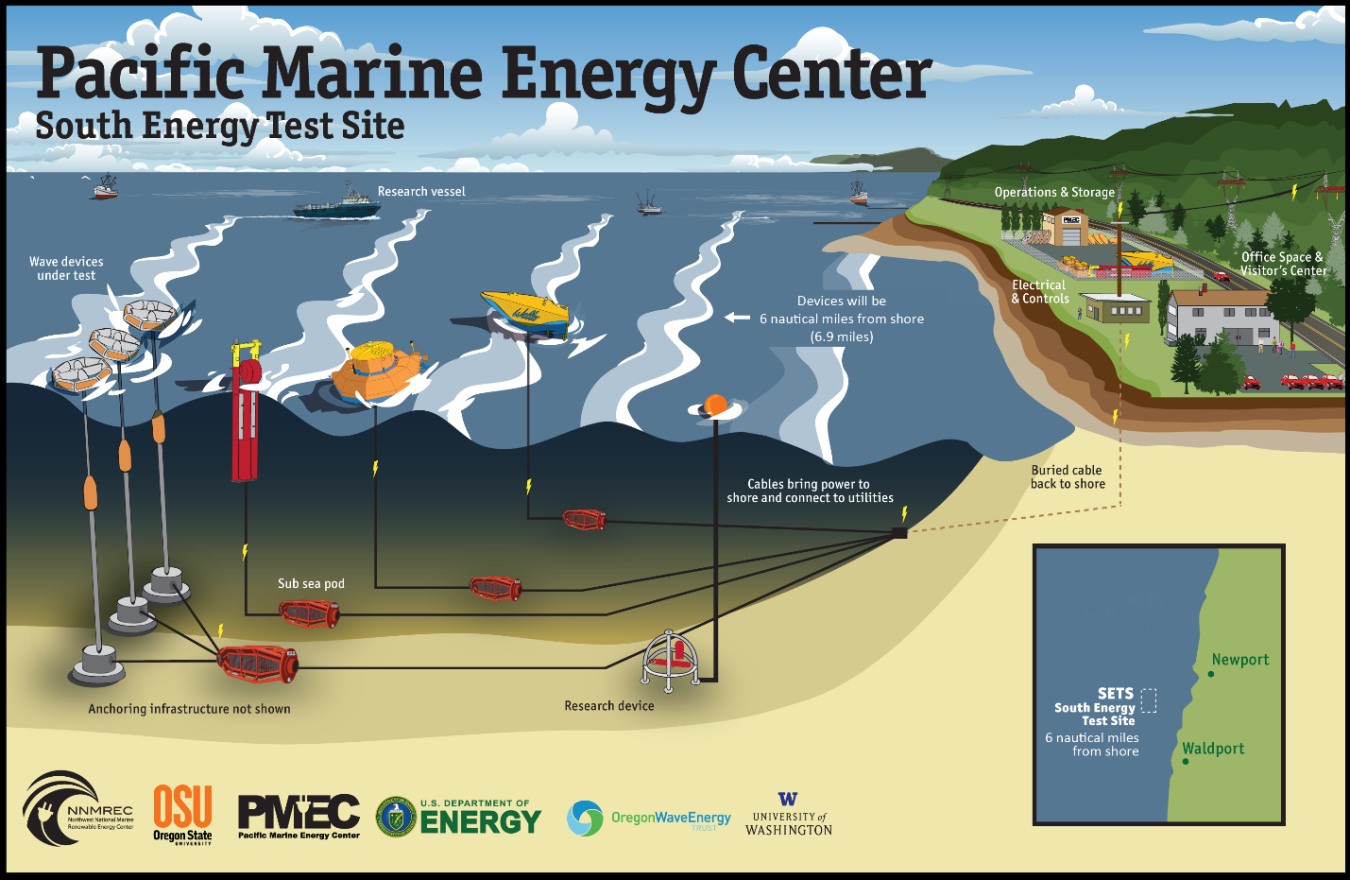The U.S. Department of Energy announced its selection for a fully permitted, grid-connected national wave energy test site in December, and the marine and hydrokinetic (MHK) energy sector has been buzzing ever since. The facility will be constructed in...
Water Power Technologies Office
January 6, 2017
The U.S. Department of Energy announced its selection for a fully permitted, grid-connected national wave energy test site in December, and the marine and hydrokinetic (MHK) energy sector has been buzzing ever since. The facility will be constructed in Newport, Oregon, by the Northwest National Marine Renewable Energy Center at Oregon State University and will support innovations in wave energy technologies capable of harnessing the significant wave energy resources along U.S. coastlines. Here are four reasons the Pacific Marine Energy Center South Energy Test Site (PMEC-SETS) is big news:
It’s a world-class testing facility.
The facility will provide world-class capabilities for wave energy testing clients to prove their technologies—a critical step toward commercialization. According to plans from Oregon State University, the site will accommodate up to 20 wave energy converters in four test berths at one time, while supplying up to 20 MW of electricity to the grid. Each of the four test berths will have a dedicated transmission cable to each testing berth. The facility will be pre-permitted for nearly all currently available WEC technologies, according to Oregon State.
It’s a major step toward commercialization and global leadership.
Wave energy technologies will provide an enduring economic benefit to the nation by establishing a domestic manufacturing and technology sector, thus securing leadership in an emerging global market. But while we know wave energy is a significant untapped energy resource along America’s coasts, investors and the business community must see proof-of-concept first, before they’re ready to get behind a new energy technology. Prototype testing is essential to gather critical performance data to address technical risks, lower costs, and inform future designs—all steps to accelerating the commercialization and deployment of mass-produced wave energy technologies.
It’s a pathway to the huge potential of wave energy.
The potential for wave energy is great, especially with 50% of the U.S. population living within 50 miles of coastlines. Major load centers adjacent to coasts could one day be powered by wave energy. Even before that, we expect to see wave energy providing power in areas with high electricity costs, such as in remote locations or for military applications. The Energy Department’s resource assessments show the technically recoverable wave energy resource at approximately 1,000 TWh/year, distributed across Alaska, the West Coast, the East Coast, the Gulf of Mexico, Hawaii, and Puerto Rico. For context, about 90,000 homes can be powered by 1 TWh/year.
It’s a cornerstone of a comprehensive strategy.
In 2016, the Water Power Technologies Office’s (WPTO) made significant efforts to gather stakeholder feedback and draft a National Strategy for Marine and Hydrokinetics. The draft strategy offers a vision, mission statement, and strategic goals for developing a U.S. marine energy industry that expands and diversifies the nation’s renewable energy portfolio. The availability of testing infrastructure is an important component of the strategy, providing a capability for full-scale, grid-connected demonstration of wave energy technologies.

